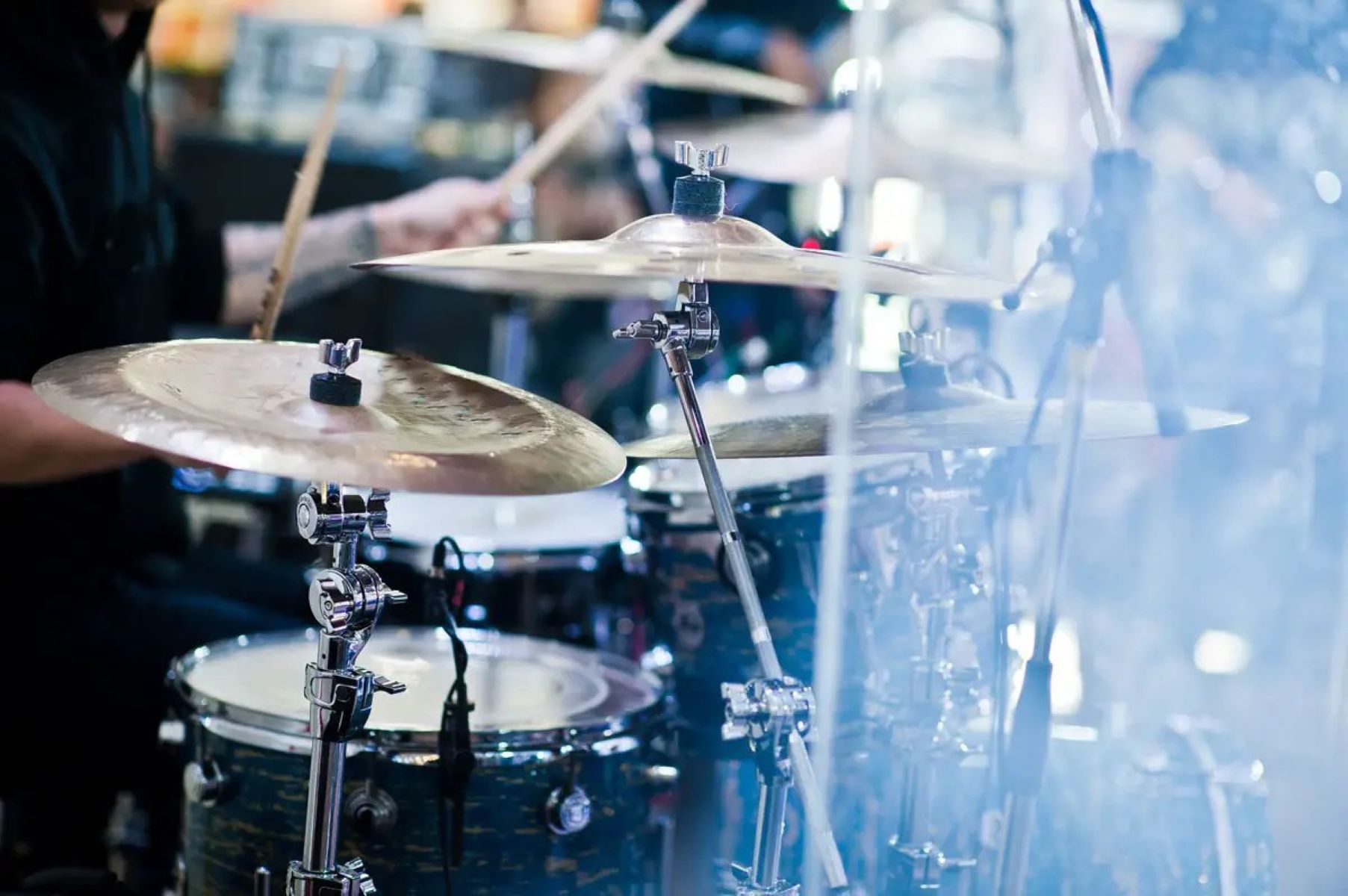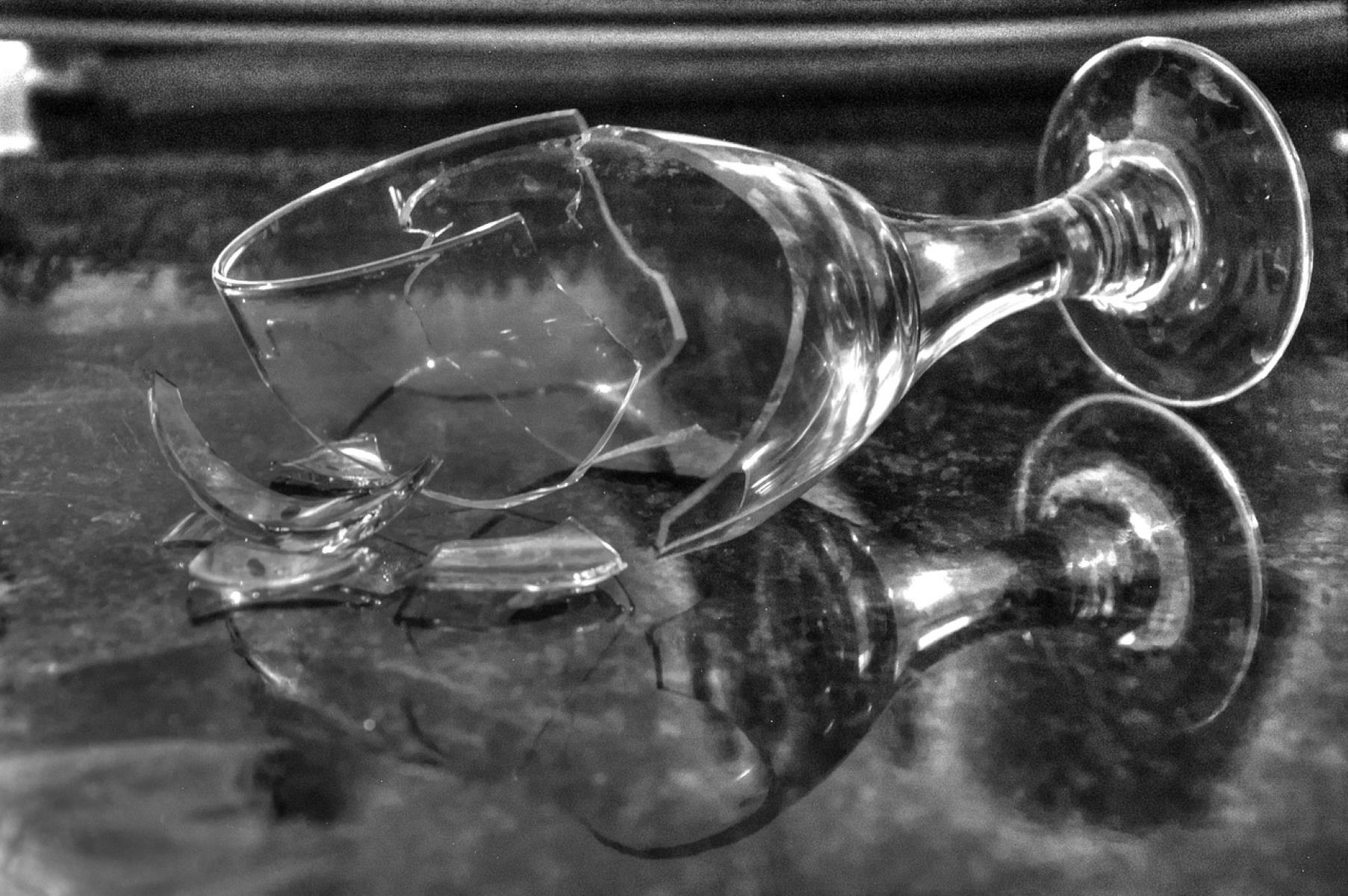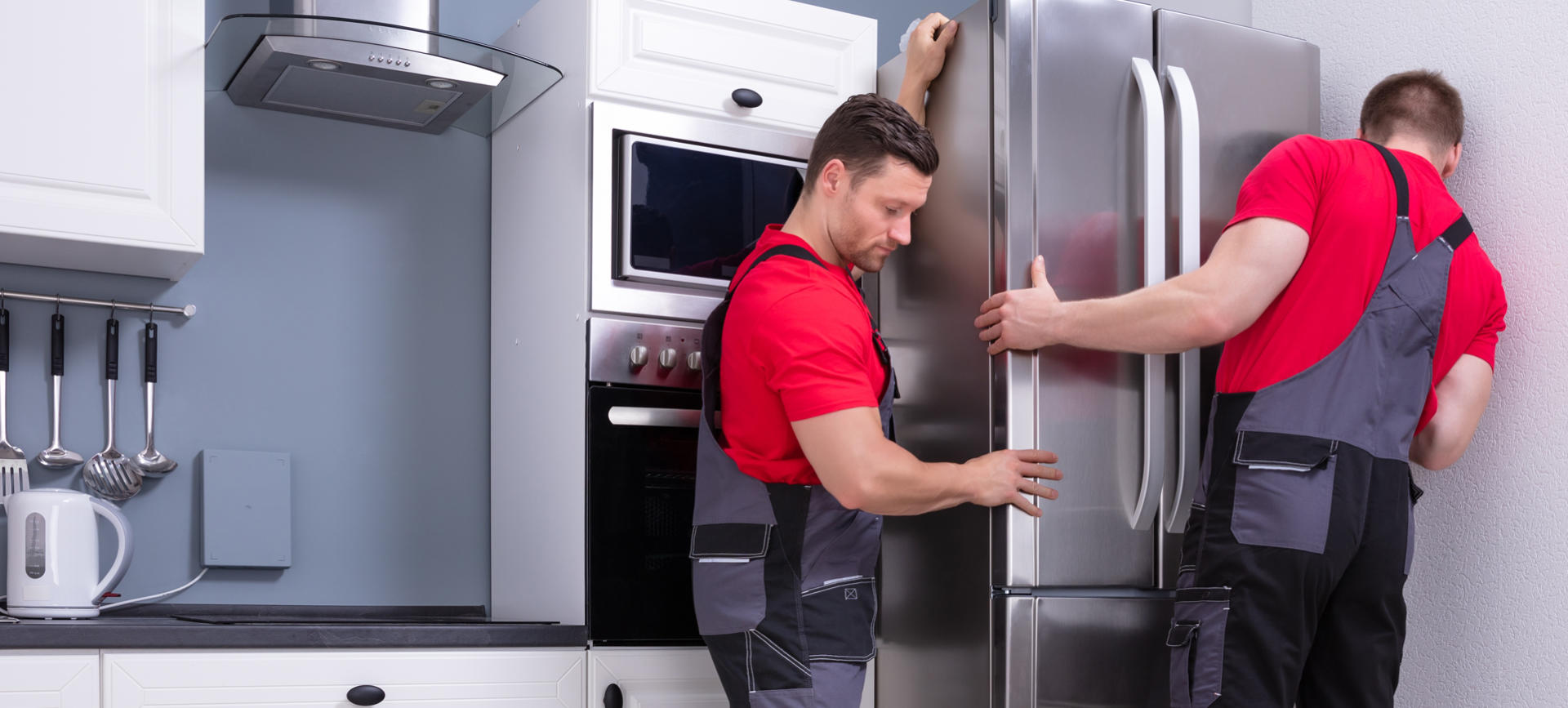Home>Furniture & Design>Interior Design Trends>Why Are Drummers Behind Glass


Interior Design Trends
Why Are Drummers Behind Glass
Modified: October 18, 2024
Discover the latest interior design trend of placing drummers behind glass and learn the reasons behind this unique and innovative approach. Explore the impact of this trend on modern interior design.
(Many of the links in this article redirect to a specific reviewed product. Your purchase of these products through affiliate links helps to generate commission for Storables.com, at no extra cost. Learn more)
Introduction
The concept of drummers performing behind glass has intrigued and captivated music enthusiasts and interior design aficionados alike. This unique arrangement, often found in recording studios and live performance venues, serves a dual purpose, blending functionality with aesthetic appeal. The practice of positioning drummers behind glass has evolved over time, influenced by both practical considerations and artistic sensibilities. In this article, we will delve into the history, benefits, drawbacks, and the future of drummers performing behind glass, shedding light on this intriguing phenomenon that continues to shape the music industry and interior design landscape.
Key Takeaways:
- Drummers performing behind glass offer better sound quality and a cool visual vibe, but it can create a disconnect with the audience and pose logistical challenges.
- The future of drummers behind glass is all about high-tech integration, eco-friendly design, and creating collaborative performance spaces for a more inclusive and diverse music scene.
Read more: How To Clean Glass Behind Screen Door
The History of Drummers Behind Glass
The practice of positioning drummers behind glass traces its origins to the mid-20th century, with its roots embedded in the evolution of recording technology and the quest for sonic perfection. In the early days of studio recording, engineers and producers encountered challenges in capturing the ideal drum sound without bleed from other instruments. This led to the innovative idea of isolating the drum kit in a separate space, often enclosed by glass panels, to achieve pristine audio quality.
As recording techniques advanced, the concept of drummers performing behind glass gained traction, becoming synonymous with the iconic sound of numerous hit records. The visual impact of seeing a drummer enclosed within a glass enclosure added a layer of intrigue and mystique to the recording process, captivating audiences and musicians alike. This trend transcended the confines of recording studios and made its way into live performance settings, where the allure of a drummer ensconced behind glass became a defining feature of the stage setup.
The 1970s and 1980s witnessed a surge in the popularity of drummers performing behind glass, coinciding with the rise of progressive rock, funk, and electronic music genres. Bands and artists sought to harness the power of isolation to achieve unparalleled drum sound clarity, and the use of glass enclosures became a hallmark of their sonic identity. This era marked a pivotal point in the history of drummers behind glass, cementing its status as a symbol of technical precision and artistic innovation.
In the realm of interior design, the incorporation of drummers behind glass in recording studios and performance venues became a statement of modernity and sophistication. The juxtaposition of the drummer's kinetic energy against the transparent barrier created a visually compelling spectacle, blurring the lines between functionality and visual artistry. This fusion of form and function underscored the enduring appeal of drummers behind glass, positioning it as a timeless emblem of both musical prowess and design ingenuity.
The evolution of drummers performing behind glass reflects a convergence of technological advancements, artistic expression, and spatial design, shaping the sonic and visual landscapes of the music industry. This historical trajectory sets the stage for a deeper exploration of the benefits, drawbacks, and the future implications of this intriguing phenomenon.
The Benefits of Drummers Behind Glass
The practice of positioning drummers behind glass confers a myriad of benefits that resonate across the realms of music production, live performances, and interior design. These advantages, both practical and aesthetic in nature, have contributed to the enduring appeal of this distinctive setup.
1. Acoustic Isolation:
The primary advantage of drummers performing behind glass lies in the realm of sound isolation. By enclosing the drum kit within a glass enclosure, engineers and producers can achieve unparalleled control over the drum sound, minimizing bleed from other instruments and environmental noise. This isolation fosters a pristine audio environment, allowing for precise mic placement and capturing the nuances of the drum performance with exceptional clarity.
2. Visual Aesthetics:
From an aesthetic standpoint, the presence of a drummer behind glass adds a visually captivating dimension to both recording studios and live stages. The transparent barrier serves as a focal point, creating a striking juxtaposition between the kinetic energy of the drummer and the sleek, modern design of the glass enclosure. This visual spectacle not only enhances the overall ambiance but also reinforces the sense of artistry and sophistication associated with the performance space.
3. Spatial Efficiency:
In recording studios where space is often at a premium, the use of glass enclosures for drummers offers a practical solution. By confining the drum kit within a designated area, studios can optimize their spatial layout, ensuring efficient utilization of available square footage. This spatial efficiency extends to live performance venues, where the strategic placement of drummers behind glass contributes to a streamlined stage setup, allowing for seamless integration with lighting and audiovisual elements.
4. Performance Focus:
The presence of a glass enclosure can create a conducive environment for drummers to focus on their performance without external distractions. This controlled setting fosters a sense of immersion and concentration, enabling drummers to deliver their best performances while remaining visually connected with the audience. Additionally, the physical barrier can serve as a shield against potential stage hazards, ensuring the safety and well-being of the drummer during high-energy performances.
5. Brand Identity:
For recording studios and performance venues, the inclusion of drummers behind glass can contribute to the establishment of a distinct brand identity. This unique setup becomes synonymous with the studio or venue's signature style, setting it apart from conventional spaces and reinforcing its reputation as a hub of innovation and creativity.
In essence, the benefits of drummers performing behind glass extend beyond the realms of sound and design, encompassing practical, visual, and brand-related advantages that continue to shape the landscape of music production and performance art. This multifaceted appeal underscores the enduring relevance of this distinctive practice, positioning it as a hallmark of both technical precision and artistic expression.
The Drawbacks of Drummers Behind Glass
While the practice of positioning drummers behind glass offers a range of advantages, it is not without its drawbacks. These limitations, though nuanced, warrant consideration in the broader context of music production, live performances, and spatial design.
-
Visual Disconnect:
One of the primary drawbacks of drummers performing behind glass is the potential for a visual disconnect between the drummer and the audience. The transparent barrier, while visually striking, can create a perceptual barrier that diminishes the sense of direct engagement between the drummer and the spectators. This can detract from the immersive experience of live performances, where the visual connection between musicians and audience members plays a pivotal role in fostering a sense of intimacy and shared energy. -
Aesthetic Constraints:
While the presence of a glass enclosure can contribute to the overall visual appeal of a performance space, it also imposes certain aesthetic constraints. The sleek, modern design of the glass may not always align with the thematic or stylistic elements of a particular performance or recording setting. This mismatch in aesthetic sensibilities can detract from the cohesive visual narrative, creating a discordant juxtaposition that compromises the overall ambiance and artistic expression. -
Physical Barriers:
From a practical standpoint, the physical presence of a glass enclosure can pose logistical challenges for both drummers and audiovisual technicians. The need to navigate around the glass barrier during setup, soundcheck, and breakdown phases can introduce complexities and inefficiencies, potentially impeding the seamless execution of live performances and studio recording sessions. Additionally, the reflective properties of glass may pose lighting and glare-related issues, requiring meticulous adjustments to achieve optimal visual presentation. -
Spatial Limitations:
In some instances, the inclusion of a glass enclosure for drummers may impose spatial limitations, particularly in smaller recording studios and intimate performance venues. The footprint of the enclosure, coupled with the requisite clearance space, can encroach upon the available real estate, constraining the overall layout and functionality of the space. This spatial encumbrance may necessitate trade-offs in terms of equipment placement, audience sightlines, and overall spatial flow, impacting the holistic experience for both performers and attendees. -
Perceptual Sterility:
The presence of a glass barrier can engender a sense of perceptual sterility, creating a division between the organic energy of the drummer's performance and the controlled environment within the enclosure. This dichotomy, while intended to achieve sonic precision, may inadvertently dilute the raw, unbridled essence of live drumming, potentially diminishing the visceral impact and emotional resonance of the performance.
In essence, the drawbacks of drummers performing behind glass underscore the nuanced interplay between visual aesthetics, spatial dynamics, and audience engagement. While the practice offers distinct advantages, these limitations warrant thoughtful consideration in the pursuit of striking a harmonious balance between technical precision and artistic authenticity.
Read more: Why Is Glass Not A Mineral
The Future of Drummers Behind Glass
The trajectory of drummers performing behind glass is poised to undergo a compelling evolution, driven by a confluence of technological innovation, artistic experimentation, and shifting paradigms in spatial design. As we peer into the future of this distinctive practice, several trends and possibilities come into focus, offering tantalizing glimpses of what lies ahead.
Technological Integration:
The future of drummers behind glass is intricately linked to advancements in audiovisual technology. With the proliferation of immersive audio formats and interactive visual displays, the glass enclosure can transcend its role as a mere physical barrier, evolving into a canvas for dynamic sonic and visual experiences. Integration of augmented reality (AR) and spatial audio technologies holds the potential to transform the glass enclosure into a multi-sensory interface, amplifying the impact of drum performances and redefining the boundaries of audience engagement.
Adaptive Design Solutions:
In the realm of interior design and architectural innovation, the future of drummers behind glass is poised to witness a surge in adaptive design solutions. From modular, reconfigurable enclosures to transparent, sound-reactive materials, designers are exploring novel approaches to harmonize the functional benefits of isolation with the aesthetic versatility of transparent barriers. These adaptive solutions will cater to the evolving needs of recording studios, live venues, and immersive performance spaces, fostering a dynamic interplay between form, function, and artistic expression.
Environmental Integration:
As sustainability and eco-conscious design principles take center stage, the future of drummers behind glass will intersect with environmentally integrated practices. The development of acoustic glass panels with embedded energy-efficient technologies and recyclable materials will redefine the ecological footprint of glass enclosures, aligning them with the ethos of sustainable design. This eco-centric approach will not only enhance the acoustic properties of the enclosure but also position it as a symbol of responsible, forward-thinking design within the broader context of music production and performance arts.
Read more: Why Is Glass Clear
Collaborative Performance Spaces:
Looking ahead, the future of drummers behind glass will witness a paradigm shift towards collaborative performance spaces that transcend traditional boundaries. The glass enclosure, instead of serving as a physical divide, will evolve into a fluid interface that fosters interconnected performances, enabling seamless collaboration between drummers, visual artists, and multidisciplinary creatives. This convergence of disciplines will give rise to immersive, sensorial experiences that blur the lines between music, visual art, and spatial design, redefining the notion of performance spaces as dynamic, interactive environments.
Cultural Relevance and Evolution:
In the broader cultural context, the future of drummers behind glass will undergo a nuanced evolution, reflecting the evolving narratives of inclusivity, diversity, and cultural resonance. The practice will embrace diverse artistic voices and narratives, transcending traditional paradigms to amplify underrepresented perspectives and marginalized voices within the music industry. This cultural evolution will imbue the practice of drummers behind glass with a newfound depth of meaning, serving as a platform for artistic expression, social commentary, and collective storytelling.
In essence, the future of drummers performing behind glass is poised to unfold as a tapestry of technological innovation, adaptive design, environmental consciousness, collaborative creativity, and cultural evolution. This trajectory heralds a new era of possibilities, where the glass enclosure transcends its conventional role, emerging as a dynamic, transformative element that reshapes the intersection of music, design, and human experience. As this evolution unfolds, the practice of drummers behind glass will continue to captivate, inspire, and redefine the boundaries of artistic expression in the ever-evolving landscape of music and spatial design.
Frequently Asked Questions about Why Are Drummers Behind Glass
Was this page helpful?
At Storables.com, we guarantee accurate and reliable information. Our content, validated by Expert Board Contributors, is crafted following stringent Editorial Policies. We're committed to providing you with well-researched, expert-backed insights for all your informational needs.













0 thoughts on “Why Are Drummers Behind Glass”